Mario Merz (Milan, Italy, 1925 - 2003), one of the main exponents ofArte Povera, is part of the wake of his contemporary Italian artists, active between the 1970s and 1980s, who contribute to the spread of new trends and experimentation in art, starting with the classic work painted on canvas and then arriving at installations in the 1960s, apparently simple but actually bearing certain messages and philosophical lucubrations.
In the case of Merz, the elements to which the artist entrusts his artistic message are neon tubes, thus reusing a material that was born for a different use to express vital energy; igloo-shaped installations, which refer to ancient archetypes and which he uses as a way of investigating the relationship between the work of art and the space around it; and finally the Fibonacci number series, which being progressive suggests a reasoning about the growth of the individual.
Merz’s work, around the 1990s, after taking over museums and galleries thus further surpassing the concept of the exhibition hall in which to place the work (e.g. he placed the Fibonacci series on a balustrade at the Guggenheim in New York), he also lands in urban contexts such as the Antonellian Mole and subway stations in some Italian and European cities, with the intention of sharing his art as much as possible with the public. His thoughts on art can also be found in a collection of his writings, Voglio fare subito un libro, published in 1985.

Mario Merz was born in Milan on January 1, 1925, but shortly after his birth his family decided to move to Turin. Here, Merz studied at the scientific high school. At the outbreak of World War II, Merz, then a young man in his twenties, wanted to join the anti-fascist group “Giustizia e Libertà” and was arrested while leafleting. During the months he spent in prison, he was a cellmate of painter Luciano Pistoi and began to practice drawing. Once out of prison, he enrolled at theUniversity of Turin to study medicine, but very soon left his studies to devote himself full-time to painting, thanks to his association with the abstract artists Luigi Spazzapan and Mattia Moreni. His first solo exhibition took place in 1954 at La Bussola gallery in Turin. He met what became his wife, Marisa, in 1959, and together with her and their daughter Beatrice decided to move to German-speaking Switzerland.
In 1962 an anthological exhibition was dedicated to him in Turin, in the Notizie gallery, in which Merz was presented as one of the most interesting artists of his generation. This was the moment of greatest maturity for the artist, who nevertheless decided during these years to withdraw temporarily so as to reflect on new research for his art. These reflections found fulfillment in the volumetric works of 1966-67. He returned permanently to Turin and became an important figure in the city’s highly dynamic artistic debate, which consisted of a mix of avant-garde galleries, such as Gian Enzo Sperone’s Il Punto, and young conceptual artists such as Giulio Paolini, Michelangelo Pistoletto, Alighiero Boetti, Piero Gilardi and, above all, the young art critic Germano Celant, theorist of the Arte Povera movement whose name he himself devised. The two met in 1967.
That same year, Merz took part in the group exhibition Con temp l’azione and the following year held a solo show at the Sperone gallery. With the spread of Arte Povera, Merz turned out to be at the forefront of the collective’s exponents by participating with the group in 1968 in Arte povera + azioni povere in Amalfi, and then the following year in the group show Live in your head: when attitudes become form in the Kunsthalle in Bern, an occasion that proved to be very important for the recognition of Arte Povera internationally. Other important exhibitions that took place in the 1980s were a retrospective curated by Celant in the Palazzo delle Esposizioni in San Marino in 1983 and the entire space dedicated to him in the Guggenheim Museum in New York in 1989, for an anthological exhibition with a monumental character. In 1985 Merz, who was very interested in sharing his artistic intent outwardly, put together several of his writings, both previously published and unpublished, in a volume edited by his daughter Beatrice under the title Voglio fare subito un libro.Having since attained an illustrious worldwide reputation, Merz received several honors, such as the Arnold Bode Prize received in Kassel in 1981, the Oskar Kokoschka Prize in Austria in 1983, the title of cavaliere di gran croce of the Italian Republic in 1993, and an honorary degree from the University of Bologna in 2001. Finally, within weeks of his death on November 9, 2003, he also received the Praemium Imperiale of the Japan Art Association, the highest honor in the art world.

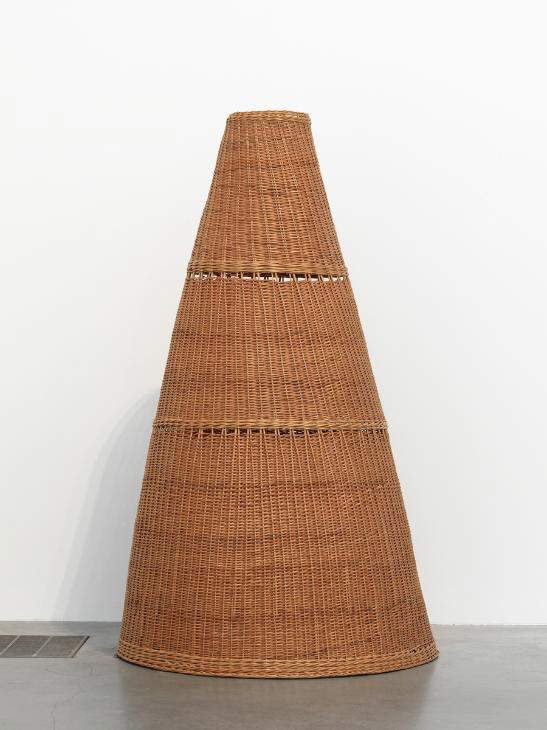
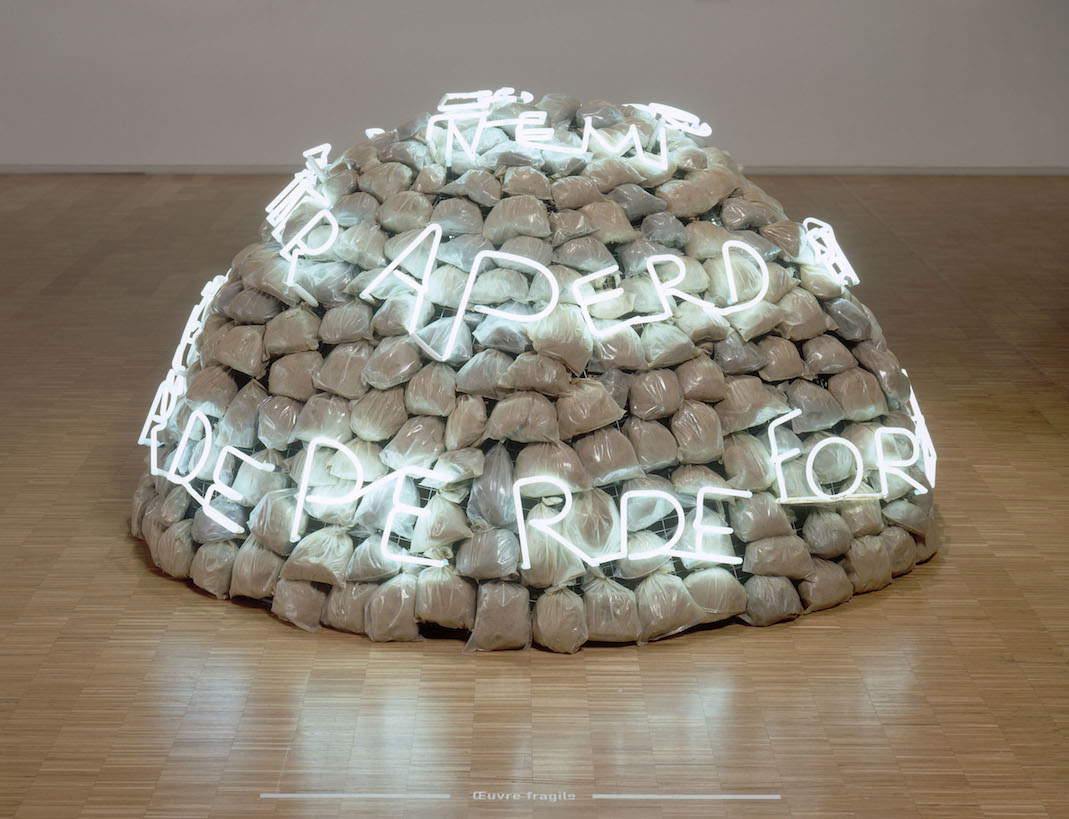
Like many of his contemporary artists, the beginnings of Merz’s production turn out to be predominantly pictorial, and then from the mid-1960s onward he came to three-dimensional solutions, such as the famous igloos, and to the application of unusual materials, such as neon, which was used in lighting but which Merz made his main artistic medium.Initially then, Merz’s first works dated to the 1950s depicted natural elements such as flowers or leaves, as well as social themes, for example The Welder (which he made in 1959 in several versions) preferring oil paint used with quick brushstrokes, with an end result similar to American expressionism.
In the second half of the 1960s, Merz set aside painting to devote himself to installations in which he manipulated and assembled materials that had never been used before, effectively achieving a union between painting and sculpture. For example, he inserted neon tubes into his canvases, with the specific intent of symbolizing an infusion of energy capable of giving life to inorganic matter. Another example are the so-called “volumetric paintings,” which he created by combining together very different materials such as iron, wax and stone. In the works dated around 1968, it is possible to find the political and ideological demonstrations that were ignited throughout Italy, in fact Merz reproduced through the usual neon tubes the slogans that he happened to hear during the student marches. But that was not all: the year in question was very productive and saw Merz focus first on the creation of alienating objects, such as the Cestone, a wicker basket much larger than real that was hung on a wall, and in the same year igloo-shaped installations appeared for the first time, destined to be the distinctive element by which Merz is best known.
Through this particular self-supporting circular construction, produced in various versions that differ in size and materials (such as jute, stone, clay, etc.), Merz cites certain archetypal symbols of antiquity such as the cosmos and nomadic life. Moreover, he wished to show how these structures, although they stood independently, needed their surroundings in order to exist as they circumscribed a portion of space. On one of them, titled Giap’s Igloo (1968), made of earth, Merz had moreover placed the following phrase attributed to the Vietnamese general Vo Ngyen Giap who won against French troops in 1954: “If the enemy concentrates he loses ground, if he disperses he loses strength,” reinforcing precisely the concept of the interconnection between work and space.
Beginning in 1970, the Fibonacci series first appeared in Merz’s works, a sequence of numbers that starts with 0 and 1 and continues so that each subsequent number turns out to be the sum of the previous two, creating a progression that suggests human growth. When one tries to reproduce graphically the number series in question, it turns out to be similar to a spiral, and from this detail Merz takes inspiration for his installations by recreating the succession with spirals or circular and curved shapes. It can be found either as an integral part of some installations or applied to the structures of museums and exhibition spaces, as in the case of the affixing of the spiral on the balustrade of the interior ramp of the Guggenheim Museum in New York, designed by Frank Lloyd Wright, in 1971. Finally, the application of the Fibonacci series in the work Acceleration (1972) turns out to be peculiar, inserted as if it were giving a motorcyclist the push to hurtle toward infinity.
The Fibonacci series will remain present in numerous subsequent works even twenty years later, for example appearing under another declination in the work The Spiral Appears (1990), in which a series of beech and chestnut tree faggots are arranged in space creating a curve, while the succession of numbers made with neon is placed on some local newspapers, symbolizing the cyclical flow of time. Going back to the 1970s, the introduction of a table in the artist’s installations dates back to this period, as an element that suggests conviviality and at the same time turns out to be a space in flat form raised and isolated. Merz often inserted the table along with igloos and neon, and rested fruit on it left to decompose following its natural course, wanting to represent the passage of time.
In the late 1980s, however, the artist engaged in a parallel return to figurative art and painting by representing large animals such as crocodiles, rhinos and iguanas on large unframed paintings. Moreover, Merz in this period is very interested in sharing his art as socially as possible, as evidenced both by the publication of his collection of writings mentioned in his biography and by his choice to place new installations within urban contexts. Examples of this production are the insertion of the Fibonacci series on the Mole Antonelliana in Turin in 1984, which is also found in 1990 named as Manica lunga from 1 to 987 in the Castello di Rivoli, near Turin; in 1994 it appears on the chimney of the Turku Energia power company in Turku, Finland; it will also be inserted on the ceiling of the Vanvitelli station in the Naples subway and in the underground tramway route in Strasbourg in a version over a kilometer long. In 1992, inside Zurich Central Station, Merz created the installation The Philosophical Egg, which consisted of a series of red-colored spirals made from typical neon along with suspended animals bearing the usual Fibonacci series.
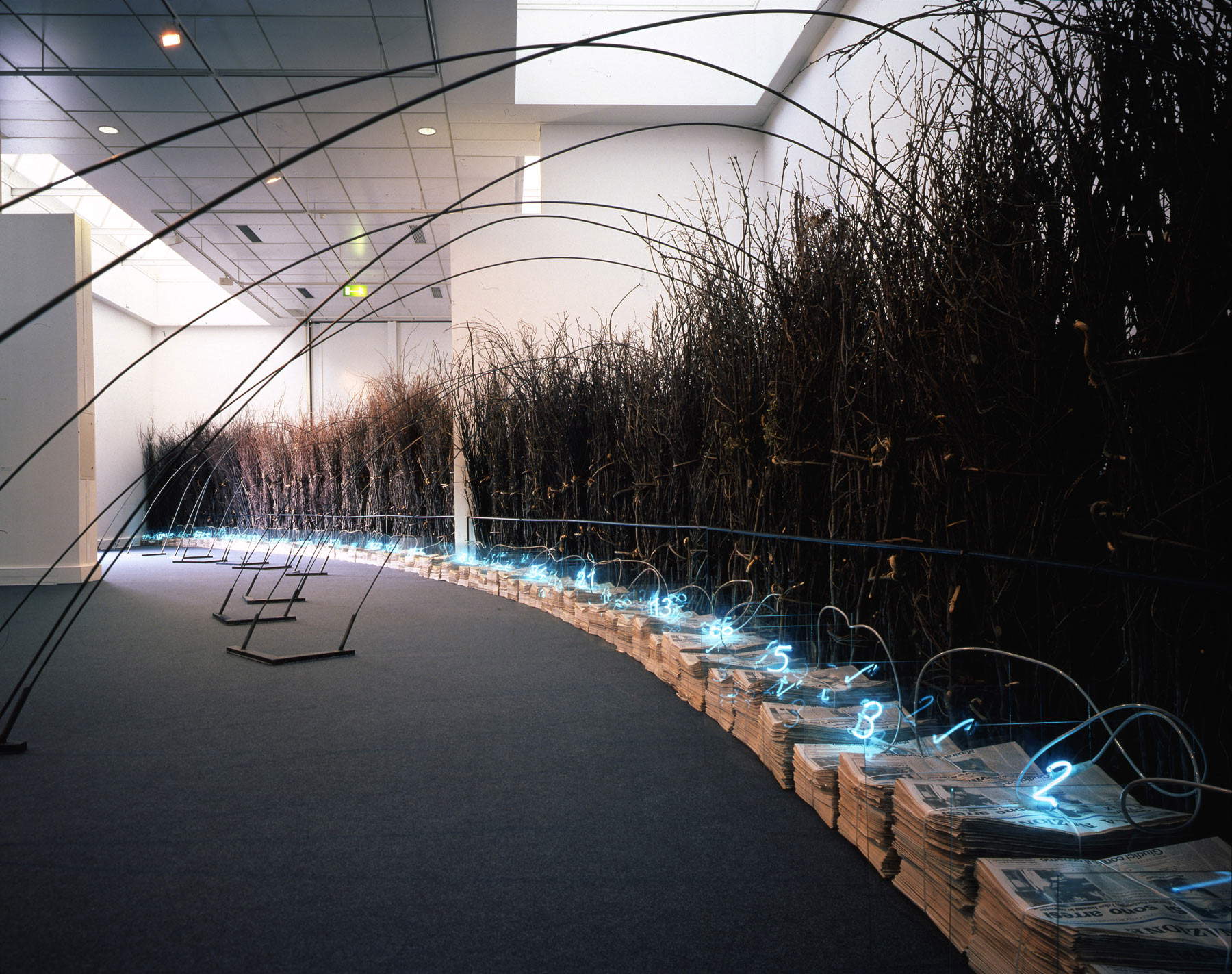
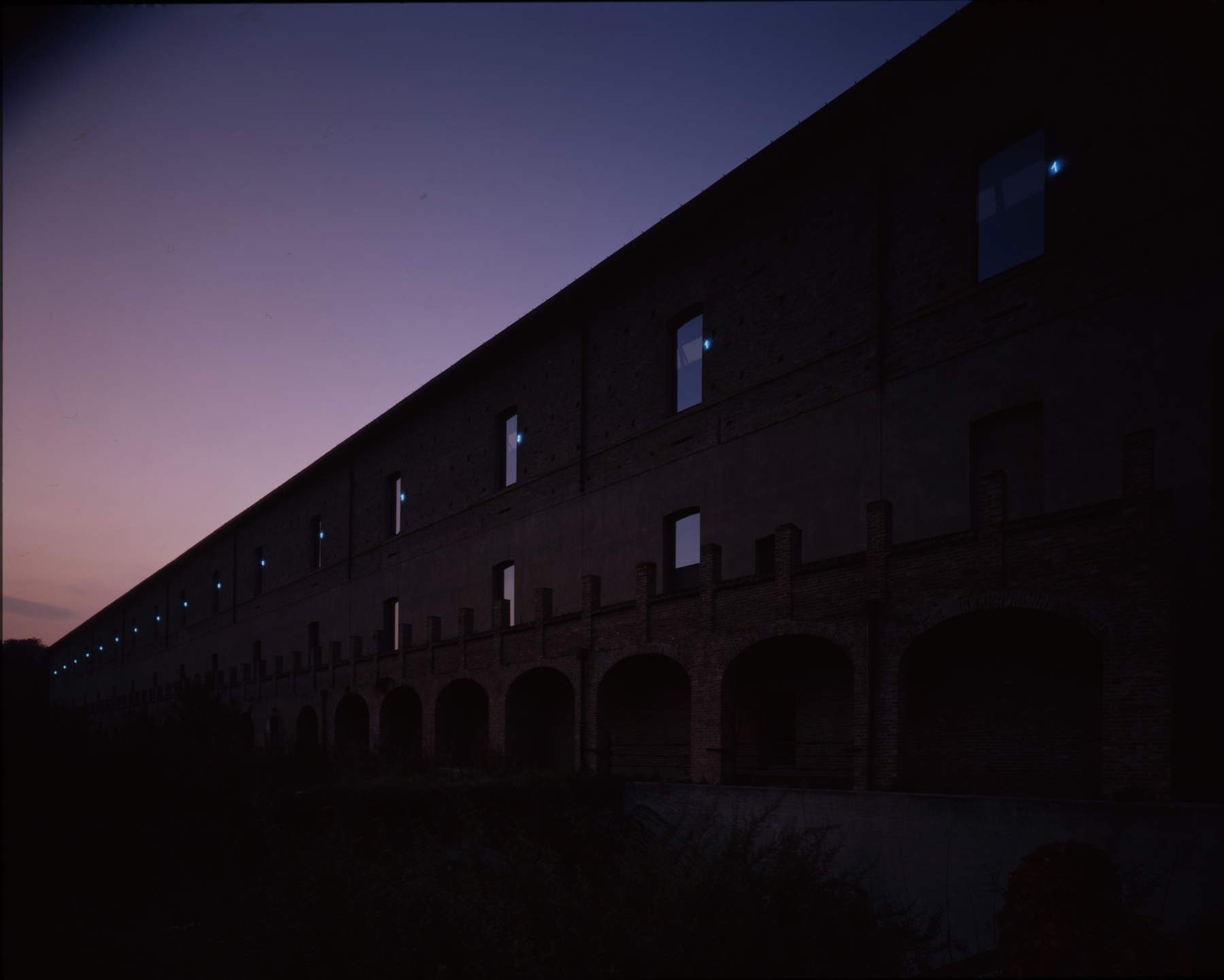

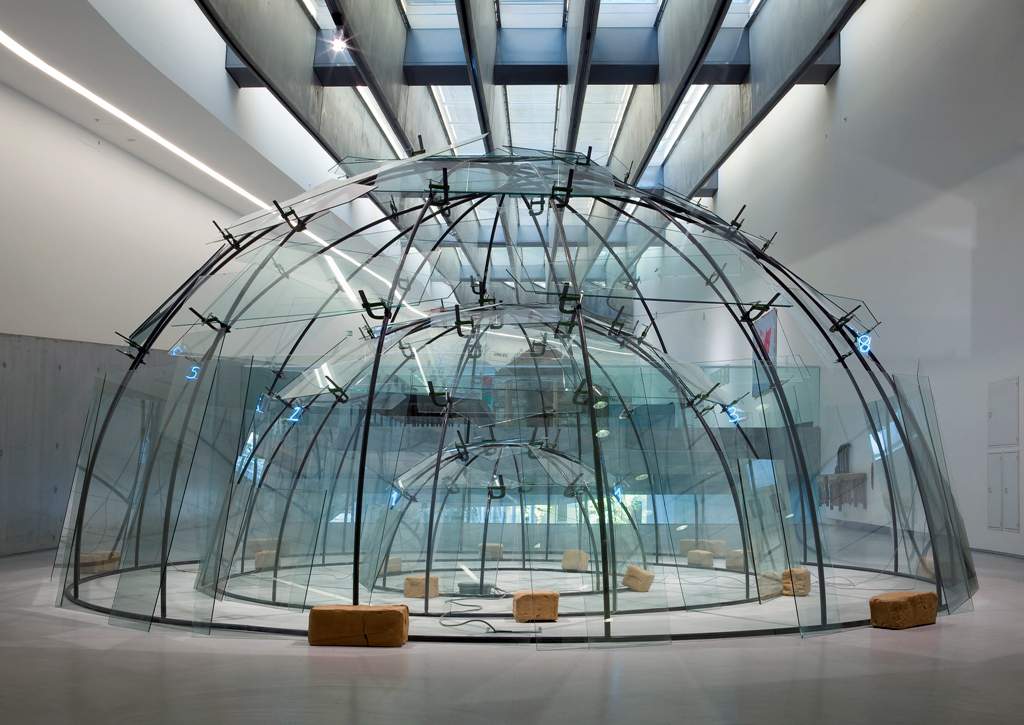
In Italy there are many works by Merz, particularly at the Luigi Pecci Center for Contemporary Art in Prato, where it is possible to see, among other works, The Spiral Appears (1990). At the MAMBo - Museo d’arte moderna in Bologna, there are some works by Merz and his wife Marisa exhibited in the part of the collection called “Arte povera.”
Other Italian museums that preserve Merz’s works are the Museo d’arte contemporanea in Rivoli, the Museo nazionale delle arti del XXI secolo in Rome, and the Museo nazionale di Capodimonte in Naples, where Onda d’urto (1987) is especially kept.
Also, in the Museo del Novecento in Milan is Zebra (Fibonacci) (1973) while in Venice, in the Guggenheim Museum, is preserved If the form disappears its root is eternal (1989), which consists of the title phrase written in the artist’s handwriting and reproduced with the usual neon tubes.
 |
| Mario Merz, the igloo artist of Arte Povera. Life, works, style |
Warning: the translation into English of the original Italian article was created using automatic tools. We undertake to review all articles, but we do not guarantee the total absence of inaccuracies in the translation due to the program. You can find the original by clicking on the ITA button. If you find any mistake,please contact us.